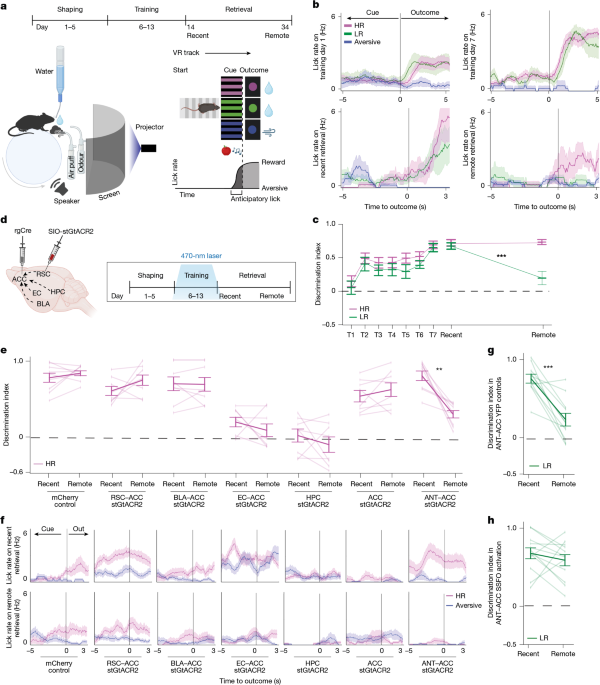
"The molecular mechanisms that enable memories to persist over long timescales from days to weeks and months are still poorly understood1. Here, to develop insights into this process, we created a behavioural task in which mice formed multiple memories but only consolidated some, while forgetting others, over the span of weeks. We then monitored circuit-specific molecular programs that diverged between consolidated and forgotten memories. We identified multiple distinct waves of transcription, that is, cellular macrostates, in the thalamocortical circuit that defined memory persistence."
"Of note, a small set of transcriptional regulators orchestrated broad molecular programs that enabled entry into these macrostates. Targeted CRISPR-knockout studies revealed that although these transcriptional regulators had no effects on memory formation, they had prominent, causal and strikingly time-dependent roles in memory stabilization. In particular, the calmodulin-dependent transcription factor CAMTA1 was required for initial memory maintenance over days, whereas the transcription factor TCF4 and the histone methyltransferase ASH1L were required later to maintain memory over weeks. These results identify a critical CAMTA1TCF4ASH1L thalamocortical transcriptional cascade that is required for memory stabilization and put forth a model in which the sequential recruitment of circuit-specific transcriptional programs enables memory maintenance over progressively longer timescales."
A behavioural task produced multiple memories in mice with selective consolidation and forgetting occurring over weeks. Circuit-specific molecular programs in the thalamocortical circuit diverged between consolidated and forgotten memories. Distinct waves of transcription, described as cellular macrostates, defined memory persistence. A small set of transcriptional regulators orchestrated broad molecular programs enabling entry into these macrostates. Targeted CRISPR knockout showed these regulators did not affect memory formation but had causal, time-dependent roles in stabilization. CAMTA1 was necessary for initial maintenance over days, while TCF4 and ASH1L were necessary later to maintain memory over weeks, indicating sequential recruitment of transcriptional programs for longer-term maintenance.
Read at www.nature.com
Unable to calculate read time
Collection
[
|
...
]